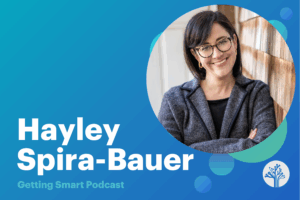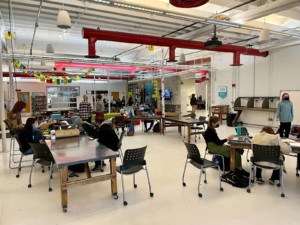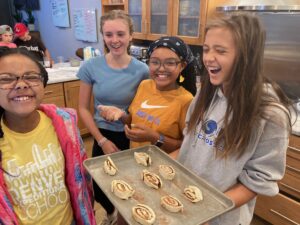4 Ways to Flip School Culture

Most in education have heard the term ‘flipped.’ In school, this has simply meant changing the instructional approach by turning what you’ve traditionally done upside down. Common examples have been moving the independent work associated with homework to the classroom and the direct instruction associated with class to home. But when we normally talk about flipping things, we often forget that we would probably have to flip the culture. Many have acknowledged that culture drives learning. Therefore, in order to truly ‘flip’ our classrooms, we need to turn our traditional school cultures, environments and approaches literally upside down. Here are four starting points:
Flip The Rules
Instead of focusing on the rules or policies as an institution, focus on opportunities. Naturally, I’m not saying abandon all rules and policies. Indeed, strong school culture is based on mutual respect, professionalism, and trust. But how do we get those? By hammering a litany of rules and policies at students and families? Or rather, would we get bigger gains by emphasizing opportunities and community first thus creating a culture that supports rules, policies, and expectations. As an example, think about the first things most people see when they enter our school campuses. Schools typically or often have large signs listing the rules and sometimes accompanying penal codes if violated. What is the message here to newcomers, visitors, or even the regulars? Rules and policies are paramount here – not learning, opportunities, or relationships. It implies that this is not a truly trusting school culture. What if people were greeted at the gates by messaging focused on all of the unique opportunities at the school, great projects, great staff, or quotes from alums? It doesn’t have to be just one certain thing, but certainly, we can do better than just generic signs about rules.
Flip the Communication
Like the rules, think about all of the messaging that goes home. For example, most districts still send home some sort of handbook for student/parent signature. Imagine if that were seen as something that explained opportunities, challenged students and families, and inspired ways for advanced learning vs. just a review of policies and procedures? We all know that nobody reads the handbook. So, what would it take to make that document come to life and be valuable? Answer that question then do it. Think about all of our newsletters, robocalls, and even social media communication. Yes, we have to communicate dates, deadlines, and even rules. But if our communication focused more on opportunities, learning, celebrations, innovation, and more? Maybe these communication efforts are seen as more valuable and useful by parents, students, and stakeholders.
Flip the Hierarchy
Schools, like most institutions and organizations, have long been a bastion for traditional hierarchy. We have the principal, the vice principal, the teachers, the classified staff, and then the students. And like the rest of the world, we are quickly realizing that the top-down approach leads to only minimal results and little buy-in from all constituents or stakeholders. For years, we have been moving to a more democratic and less autocratic approach by having teachers, classified staff, etc. serve on leadership committees and teams to expand voice and buy-in. But we have traditionally still left one key group out of most of these – and that is the students.
Some districts and schools will have some students sit on a committee as a symbol but rarely as an active participant. But what if we solicited students’ voices on all school decisions, policy development, curriculum, instructional approaches, tech integration, and more? At my last school, I was proud that we never had an interview panel without at least two student representatives. And these students were vital voices in evaluating teacher interviews, presentations, and applications. Consider ways of including student voice throughout the school’s programs, procedures and decisions, and culture. You will get tremendous cultural buy-in and probably some innovative ideas.
Flip the Implementation
For years, we have wrestled with ways to implement things. Whether it be a new curriculum, new pedagogy, new technology, etc., we go from pilot programs on one side to complete implementation on the other. What if neither is right? What is neither is wrong? What if we tried it all? What if we made it competitive? What if we asked the kids? Bottom line, don’t do what you’ve always done. Stop being so scientific and try different things. If you want to increase innovation and creativity, implementation is not the problem. Fear and culture are.
Final Challenge
Choose something that you’ve always done one way and turn it upside down for the sheer heck of it. If anything, you’ll be experimenting and innovating. You may be surprised by the results. There is always more. Get in that mindset and look for opportunities to flip.
For more, see:
- Culture Eats Faculty Retention for Breakfast: 7 Essential Tips to Build a Strong School Culture
- Letting Students Lead School Culture
- Flipped Learning 2.0: Rethinking the Flipped Classroom Model
Stay in-the-know with innovations in learning by signing up for the weekly Smart Update.








0 Comments
Leave a Comment
Your email address will not be published. All fields are required.